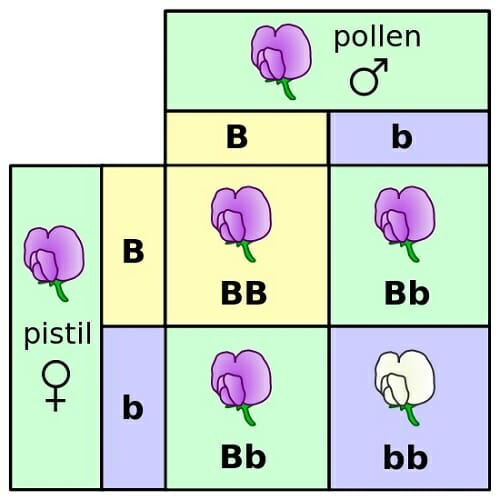

The changes just don’t have anything to do with whether the trait is dominant or not. Now of course traits can become more common over time. Whether an allele is dominant or not does not affect how common a trait is. Again the same eleven blue to one brown ratio. If they have 4 kids each, then we have 44 bb and 4 Bb. Since we aren't going to allow incest, the Bb folks will find a bb for a mate. Now these folks all pair up randomly and have 4 kids each. This is 2 people with brown eyes and 22 people with blue or green. Using regular old Mendelian genetics, we'll have 20 bb people from our 5 bb couples and 2 Bb and 2 bb from our mixed couple. The Bb person has 4 kids with one of the bb folks and each bb couple also has 4 kids. Imagine we start out with eleven bb people and one Bb person. This is because brown (B) is dominant over blue and green (b). Remember, you will have brown eyes if you are BB or Bb and blue or green if you are bb. Without some sort of outside pressure, the ratio of blue to brown eyes stays the same. To simplify things we’ll call brown eyes B and not-brown eyes b.

Let’s do a thought experiment to make this clearer. Your brown eyes can’t affect my kids’ eye color unless we get married. So why don’t their brown eyes dominate over time? Because in populations, dominant isn’t dominant over other people’s recessive gene versions. Now this allele isn’t exclusive, there are still brown-eyed folks in northern Europe. Here the not-brown allele is more common even though it is recessive. In some parts of the continent, over 80% of the population has lighter colored eyes. Instead, it is because there are mostly brown alleles of OCA2 in the African population. This isn’t because brown eyes are dominant over blue and green. Nearly everyone in most of Africa has brown eyes. The brown allele of OCA2 is dominant over the not-brown allele. We can think of OCA2 as having two versions, brown and not-brown. The decision on whether to have brown eyes or not is pretty much controlled by a single gene, OCA2. The gene responsible for it can be transmitted from generation to generation and each child born to someone with the gene has a 50:50 chance of receiving the gene and manifesting the disease.Let’s take eye color as an example. An autosomal dominant trait typically affects males and females with equal likelihood and with similar severity. Most dominant trait are due to genes located on the autosomes (the non-sex chromosomes). Polycystic kidney disease (of adult onset).Neurofibromatosis (NF1)(a neurologic disorder with an increased risk of malignant tumors), and.Huntington disease (a form of progressive dementia from which the folk singer Woody Guthrie suffered),.

Familial hypercholesterolemia (high blood cholesterol leading to premature coronary artery disease),.Achondroplasia (a common form of dwarfism with short arms and legs),.(In genetic terms, a recessive trait is one that is phenotypically expressed only in homozygotes). (In genetic terms, a dominant trait is one that is phenotypically expressed in heterozygotes).Ī dominant trait is opposed to a recessive trait which is expressed only when two copies of the gene are present. Dominant: A genetic trait is considered dominant if it is expressed in a person who has only one copy of that gene.


 0 kommentar(er)
0 kommentar(er)
